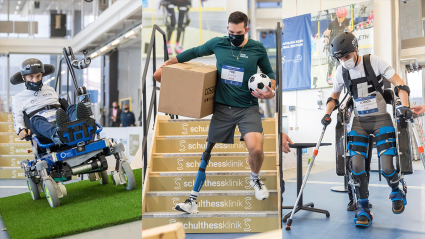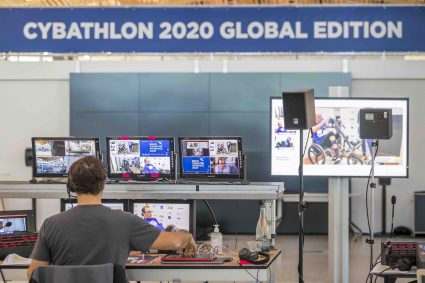Back to Robot Coding part 2: the ethical black box
In the last few days I started some serious coding. The first for 20 years, in fact, when I built the software for the BRL LinuxBots. (The coding I did six months ago doesn’t really count as I was only writing or modifying small fragments of Python).
My coding project is to start building an ethical black box (EBB), or to be more accurate, a module that will allow a software EBB to be incorporated into a robot. Conceptually the EBB is very simple, it is a data logger – the robot equivalent of an aircraft Flight Data Recorder, or an automotive Event Data Recorder. Nearly five years ago I made the case, with Marina Jirotka, that all robots (and AIs) should be fitted with an EBB as standard. Our argument is very simple: without an EBB, it will be more or less impossible to investigate robot accidents, or near-misses, and in a recent paper on Robot Accident Investigation we argue that with the increasing use of social robots accidents are inevitable and will need to be investigated.
Developing and demonstrating the EBB is a foundational part of our 5-year EPSRC funded project RoboTIPS, so it’s great to be doing some hands-on practical research. Something I’ve not done for awhile.
Here is a block diagram showing the EBB and its relationship with a robot controller.

As shown here the data flows from the robot controller to the EBB are strictly one way. The EBB cannot and must not interfere with the operation of the robot. Coding an EBB for a particular robot would be straightforward, but I have set myself a tougher goal: a generic EBB module (i.e. library of functions) that would – with some inevitable customisation – apply to any robot. And I set myself the additional challenge of coding in Python, making use of skills learned from the excellent online Codecademy Python 2 course.
There are two elements of the EBB that must be customised for a particular robot. The first is the data structure used to fetch and save the sensor, actuator and decision data in the diagram above. Here is an example from my first stab at an EBB framework, using the Python dictionary structure:
Whether a dictionary is the best way of doing this I’m not 100% sure, being new to Python (any thoughts from experienced Pythonistas welcome).
The idea is that all robot EBBs will need to define a data structure like this. All must contain the first field “robot”, which names the robot’s type, its version number and serial number. Then the following fields must use keywords from a standard menu, as needed. As shown in this example each keyword is followed by a list of placeholder values – in which the number of values in the list reflects the specification of the actual robot. The ePuck robot, for instance, has 2 motors and 8 infra-red sensors.
The final field in the data structure is “decisionCode”. The values stored in this field would be both robot and applications specific; for the ePuck robot these might be 1 = ‘stop’, 2 = ‘turn left’, 3 = ‘turn right’ and so on. We could add another value for a parameter, so the robot might decide for instance to turn left 40 degrees, so “decisionCode” : [2,40]. We could also add a ‘reason’ field, which would save the high-level reason for the decision, as in “decisionCode” : [2,40,”avoid obstacle right”] noting that the decision field could be a string as shown here, or a numeric code.
As I hope I have shown here the design of this data structure and its fields is at the heart of the EBB.
The second element of the EBB library that must be written for the particular robot and application, is the function which fetches data from the robot
How this function is implemented will vary hugely between robots and robot applications. For our Linux enhanced ePucks with WiFi connections this is likely to be via a TCP/IP client-server, with the server running on the robot, sending data following a request from the client getRobotData(ePuckspec). For simpler setups in which the EBB module is folded into the robot controller then accessing the required data within getRobotData() should be very straightforward.
The generic part of the EBB module will define the class EBB, with methods for both initialising the EBB and saving a new data record to the EBB. I will cover that in another blog post.
Before closing let me add that it is our intention to publish the specification of the EBB, together with the model EBB code, once it had been fully tested, as open source.
Any comments or feedback would be much appreciated.
Link to the original post here.
How Robots Are Revolutionizing the Life Sciences Lab
Chatty robot Franzi cheers up German patients
6 Ways to Use a Bottomless Conveyor
Introducing Eliza Kosoy; E-liza Dolls
 Eliza Kosoy is a Ph.D Student at UC Berkeley. She studied mathematics in college and then worked for Prof. Joshua Tenenbaum at MIT in his computational cognitive science lab. She then started on a Ph.D at UC Berkeley working with Professor Alison Gopnik in 2018. She is most proud of receiving funding and winning an innovation prize that catalyzed her business! Her startup is called E-liza Dolls. They are 18’’ electronic “liza” dolls that introduce young girls to coding and hardware in a fun way!
Eliza Kosoy is a Ph.D Student at UC Berkeley. She studied mathematics in college and then worked for Prof. Joshua Tenenbaum at MIT in his computational cognitive science lab. She then started on a Ph.D at UC Berkeley working with Professor Alison Gopnik in 2018. She is most proud of receiving funding and winning an innovation prize that catalyzed her business! Her startup is called E-liza Dolls. They are 18’’ electronic “liza” dolls that introduce young girls to coding and hardware in a fun way!
She chose this topic because as a woman in STEM she couldn’t help but feel the gender and racial divide and discrepancies in the hard sciences. With her background in child development, it only made sense that it’s best to expose children to these concepts early on so they will be embedded into their hypothesis space as they develop. The hardest challenge for her is “Soldering Errors” and when tiny components fall off without notice.

E-liza Dolls Kickstarter will open very soon in March 2021 We’ll update this post the moment it goes live!
Roboticists in Residence is a Silicon Valley Robotics initiative that provides free studio space and support for creative artists and engineers making a difference, whether it’s modding a Tesla with all the conveniences of the Victorian era or adding to the ROS2 navigational stack. For more information and updates from our Roboticists in Residence
Introduction to medical image processing with Python: CT lung and vessel segmentation without labels
Credit card-sized soft pumps power wearable artificial muscles
Walking quadruped is controlled and powered by pressurized air
Underwater robots are key to understanding and protecting deep-water species
Underwater soft robot inspired by the brittle star
Next-Generation Mobile Robots Fleet Management
Researchers expand study of ethics, artificial intelligence
#328: Inside Cybathlon, with Anni Kern


Kate speaks with Anni Kern, Head of Communication, strategy, and teams at Cybathlon for over four years. She describes the motivation and concepts for the Cybathlon organizations to develop a common platform to remove barriers between people with disabilities, technology developers, and the public. Anni also describes the specifics of Cybathlon competitions and the organization and planning.
Anni Kern

Anni Kern, CYBATHLON Head of Communication, Strategy, Teams and CYBATHLON @school. ETH Zurich is the inventor of the CYBATHLON project. The CYBATHLON offers a platform to advance research in the field of assistive technology and to promote dialogue with the public about the inclusion of people with disabilities in everyday life. The core of CYBATHLON of ETH Zurich is a unique competition in which people with physical disabilities compete against each other to complete everyday tasks using state-of-the-art technical assistance systems. At the CYBATHLON 2016, Anni Kern was responsible for the coordination and the support of the participating international CYBATHLON teams. Since 2017 she is among others responsible for the strategy, communication, conception of the live event as well as the CYBATHLON @school programme.
Links
- Download mp3 (11.8MB)
- Youtube channel
- Twitter: @cybathlon
- Facebook: @cybathlon
- Insta: cybathlon_eth_zurich
- Linkedin: cybathlon
